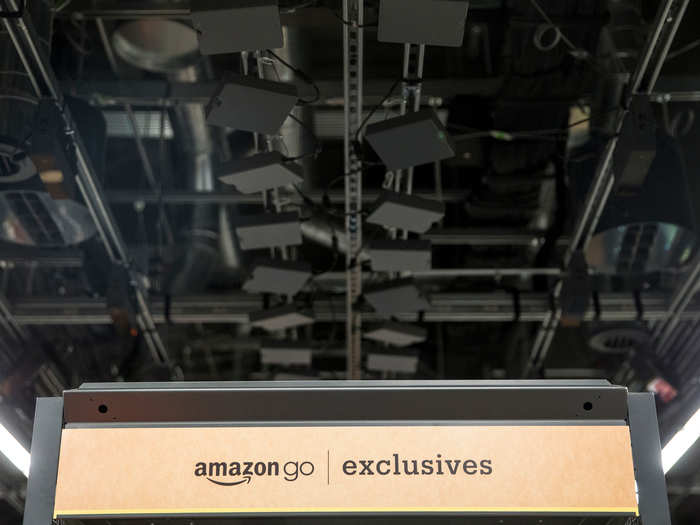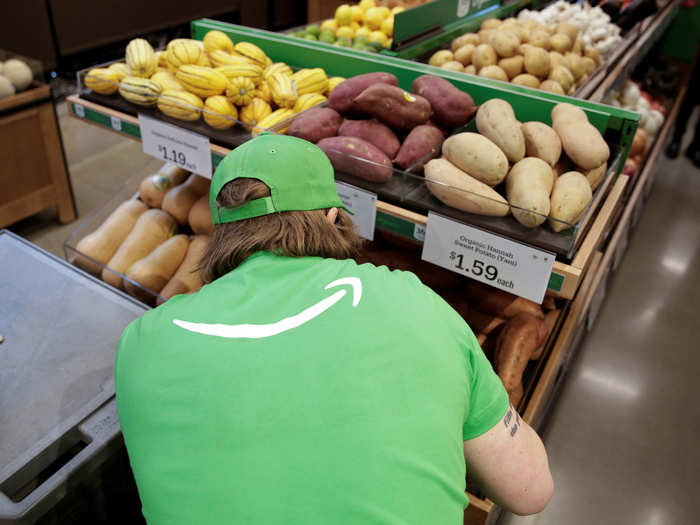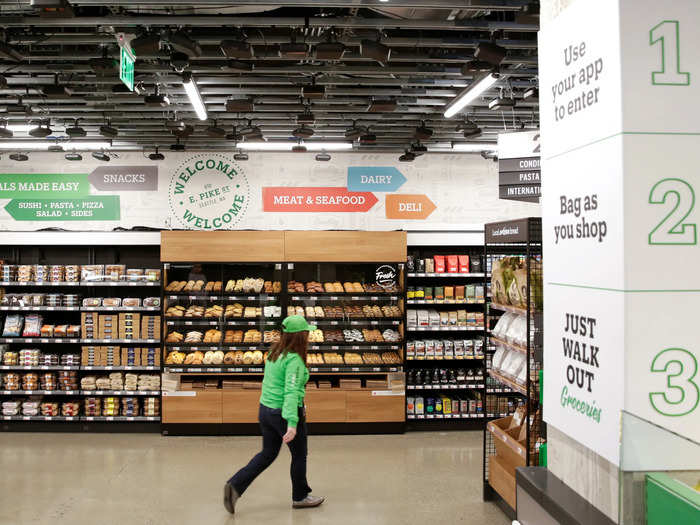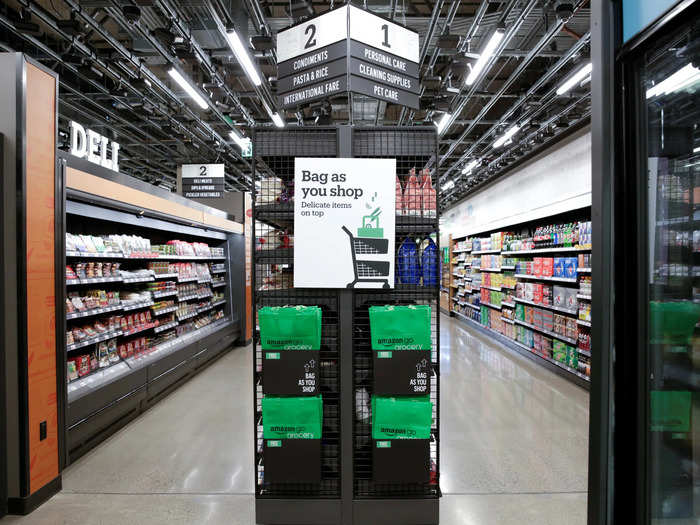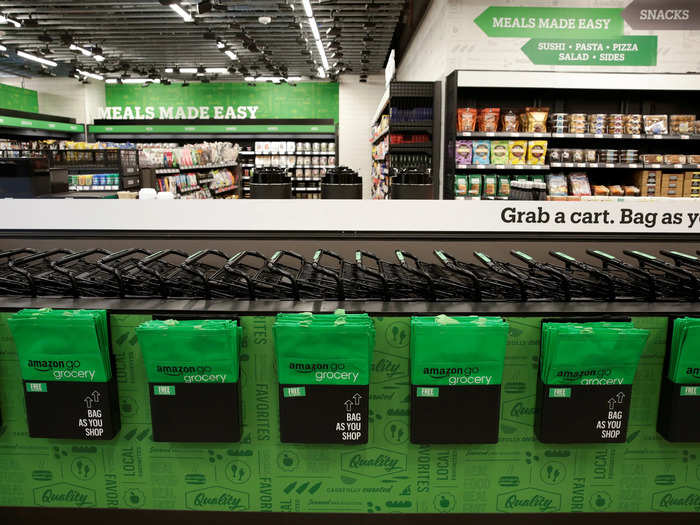Amazon monitors customers' actions once they're inside using a complex and extensive array of cameras, sensors, and motion-detection software.
Amazon Go stores don't use facial recognition, according to TechCrunch. But they do use loads of cameras, sensors, and complex software to detect motion, identify objects, and analyze all the data they collect, helping them determine which items to place in customers' "virtual shopping carts."
The sensors are "the same types of technologies used in self-driving cars: computer vision, sensor fusion, and deep learning," according to Amazon's website.
Machkovech headed for the produce section, where he hoped the irregularity of the items might give him an edge in fooling the cameras.
Canned goods or boxed items have consistent shapes, sizes, weights, and labeling, but when it comes to produce, Machkovech noted that Amazon's system must make more nuanced decisions, such as figuring out whether an avocado is a medium or large one (he said they're priced differently) and identifying subtle differences between potatoes and yams.
Machkovech said he juggled veggies, rearranged bunches of bananas, and even swapped items behind his back, hoping his sleight of hand might overwhelm the cameras.
Amazon's cameras keep a close eye on customers while they shop, but fortunately not while they're using the restroom.
Machkovech eventually decided to duck into a restroom, and while the hallways leading there did have cameras, he didn't see any inside the restroom itself. Before going in, Machkovech left an avocado on a shelf where Amazon had encouraged shoppers to leave merchandise. Once inside, he hid a banana that had come loose during his fruit juggling in his backpack.
Machkovech also put on a jacket that had been in the bag and removed a pair of sunglasses, hoping the costume change might help him disappear. On the way out, he grabbed a few small non-produce items so he could test his theory.
Go stores don't have a typical checkout process, customers just place items in their bag and walk out when they're done.
Once done shopping, customers simply exit the store rather than going through a traditional checkout process. Amazon's software will note that they left, process the data it has from their visit, total up the items, and charge their Amazon account.
When Machkovech finally received his receipt, he said he discovered he had been charged for both the loose banana and avocado left outside the restroom, but not the items he took after changing.
His receipt also took several hours to process, with Amazon estimating Machkovech had spent more than two hours shopping, suggesting his wardrobe change had done the trick.
Amazon's Go stores are just part of its major push in recent years to grow its physical presence.
Machkovech said he chalked the experience up to Amazon "solving a problem that doesn't exist," arguing that people are perfectly capable of checking customers out.
But Amazon apparently disagrees, and is reportedly looking to open 3,000 Go stores by 2021 as part of its recent push into physical locations. That effort includes Amazon's acquisition of high-end grocery chain Whole Foods in 2017 for nearly $14 billion, as well as its expansion of book stores and "4-star" stores (locations that sell a small selection of highly rated items from Amazon's online inventory).
As for thwarting potential shoplifters as it expands its cashierless Go stores, Amazon told Business Insider that "overall our technology is highly accurate."
Read the full story here.

